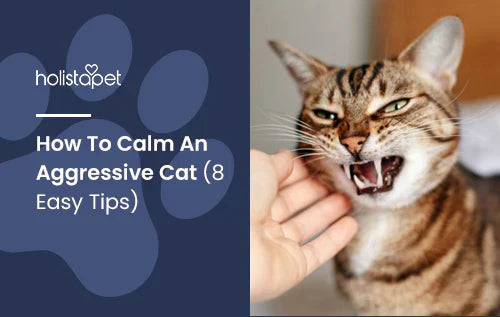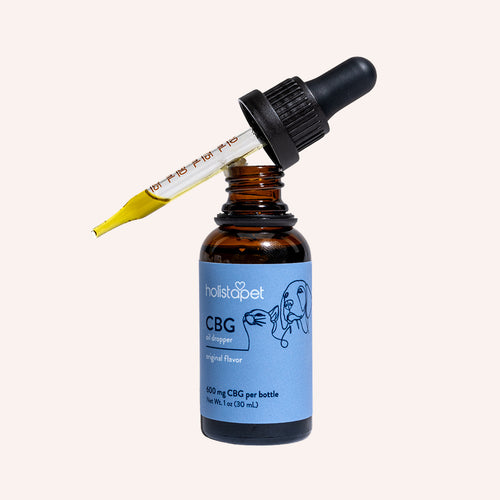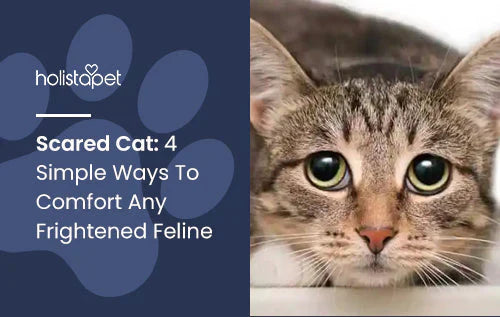Aggressive behavior doesn't necessarily mean your cat is destined to be an evil hellspawn (though you can't rule that out), but dealing with a tiny, furious creature with claws is an issue. Before you lose your nerves battling with a yowling and hissing furball, check out these tips on how to calm an aggressive cat! There might be an easier way to handle your cat's aggressive behavior.
How to Calm an Aggressive Cat
While a tiny, scratchy furball can be a cause for concern, fear not! There are options natural ways to calm your cat's aggression before you throw them in naughty kitty jail:
- Locate the Aggravator: When the source of your cat's behavior is clear, it becomes much easier to choose and implement the most effective solution on how to calm an aggressive cat. By pinpointing what sets your cat off—whether it's fear, territorial instincts, or another factor—you can address the issue more accurately and effectively, leading to a calmer, happier feline.
- Avoid Aggravators: The obvious solution for feline aggression may be to avoid stimulating them, if possible. If you know your cat often bites you when you rub its belly, don't do it. If your cat is all claw when playing with loose shoestrings, don't leave your shoes unattended.
- Avoid Punishment: Punishment for aggressive behavior is never the right thing to do. Things like spraying water or frightening your cat with a loud noise when they behave incorrectly can further increase their aggression, especially in cases of fear aggression.
- Interrupt the Behavior: Gentle whistling, throwing a toy into their line of vision, and other forms of distraction can curb the start of aggression. Interrupting the behavior by touching or picking up your cat can be dangerous because they may redirect their aggression towards you, so avoid this whenever possible.
- Behavior Modification: Behavior modification uses positive reinforcement to encourage more desirable behaviors and discourage undesirable behavior. An animal behaviorist might teach you how to get a cat to calm down, where small exposure to unpleasant stimuli can gradually diminish their fear of it.
- Calming Stimuli: For many cats, their aggression is an outlet for their frustration or a way to release energy. Providing relaxing alternatives for your cat can help ease some of their anxiety and dissipate that aggression. Will catnip calm a cat? Find out as you try Holistapet's CBD-infused catnip products!

How to Calm an Aggressive Cat If Home Remedies Do Not Work
Spaying or neutering your cats may be a solution to their aggression in cases where their behavior is fueled by their urge to mate. Sexually induced aggression can cause your cat to pick fights more often than cats that have been fixed. There are multiple benefits to spaying or neutering your cat, but it is always best to consult a vet first before having your feline undergo the knife.
Common Causes of an Aggressive Cat
Sometimes, learning how to calm an aggressive cat starts by removing an object from their space (vacuums are scary when you're a foot tall). However, it's important to recognize that each underlying cause of aggression requires a unique and thoughtful approach to manage it appropriately.
Territory
Many animals are very territorial with their space, and cats are no exception. Territorial aggression is typically directed towards other cats, but that doesn't mean they won't be aggressive towards other animals or people. Their perceived territory can include your home, yard, an area around your house, the block, and sometimes an entire neighborhood.
Fear
Fearful aggression occurs when a cat is scared or threatened and feels it cannot escape. A combination of offensive and defensive behavior is displayed in an attempt to ward off the threat. Usually, the cat will calm down on its own when the threat goes away, so it is best to leave them alone when displaying fearful aggression.

Pain or Discomfort
Pain-induced aggression can cause anxiety if a cat anticipates being touched or picked up, causing them to lash out. If you suspect your cat has an underlying medical issue causing them pain or discomfort, you should immediately take them to a vet.
Play Aggression
Cats are predatory creatures, and when they play, they are practicing their hunting and attacking skills. Younger cats are more likely to have play aggression and are the most common aggressive behavior directed towards their owners. Kittens who don't get socialized properly or otherwise are not taught to temper their rough play behavior will continue to rough play with their owners or other cats.
Frustration / Redirection
Redirection is a relief tactic where a cat becomes startled or upset by something, but instead of running away or dealing with the cause of their distress, they target the nearest thing they can get to. Common causes for redirected aggression can be:
- Seeing an animal through a window or door, they cannot get to
- Hearing high-pitched noises
- Being frightened or harassed by a dog or another cat
- An interrupted catfight
Instincts
For mama cats, keeping her babies safe is the number one priority. Maternal aggression occurs when your cat feels the need to protect her offspring from perceived danger. Territorial instinct and the urge to hunt are also innate behaviors that can trigger cat aggression.

What Are the Most Aggressive Cat Breeds?
Some studies suggest that genetics are the biggest determining trait for a cat's predisposition. Though there is some variance among the ranking of these breeds, the more aggressive breeds tend to be:
- Turkish Van
- Angora
- Bengal
- Siamese
- Sphynx
- Egyptian Mau
- Korat
- Bombay

Other studies have suggested that coat color can determine cat demeanor and that you can get an idea of how docile a cat can be based on its coloring. The more docile breeds included cat breeds with solid colors or with tabby coats such as the following:
- Persian
- Exotic shorthair
- Ragdoll
- British Shorthair
- Abyssinian
- Norwegian Forest
- Russian Blue
- Saint Birman
Related Post: Top Cat Behavior Issues Explained
Final Thoughts - How to Calm an Aggressive Cat
Aggression in cats is sometimes treated as more of a nuisance than a serious issue due to their smaller stature than other house pets like dogs. Cat bites and scratches post their risks like infection and diseases if not taken care of, and can cause anxiety and wariness in people who have had bad experiences with aggressive cats. With enough trial and error, any behavioral problems can improve as you learn how to calm an aggressive cat.


 CBD Oil for Cats - Fast Acting
CBD Oil for Cats - Fast Acting
 CBD Cat Treats - Easy Dose
CBD Cat Treats - Easy Dose
 CBD Calming Chews for Cats - Highly Rated
CBD Calming Chews for Cats - Highly Rated
 CBG Oil for Dogs and Cats - Loved by Thousands
CBG Oil for Dogs and Cats - Loved by Thousands





Leave a comment
All comments are moderated before being published.
This site is protected by hCaptcha and the hCaptcha Privacy Policy and Terms of Service apply.